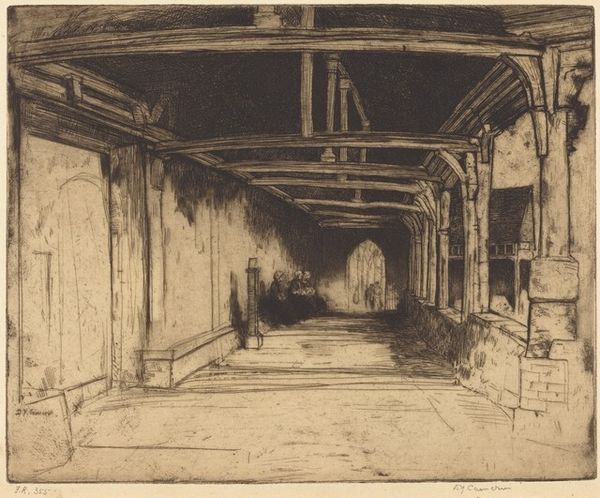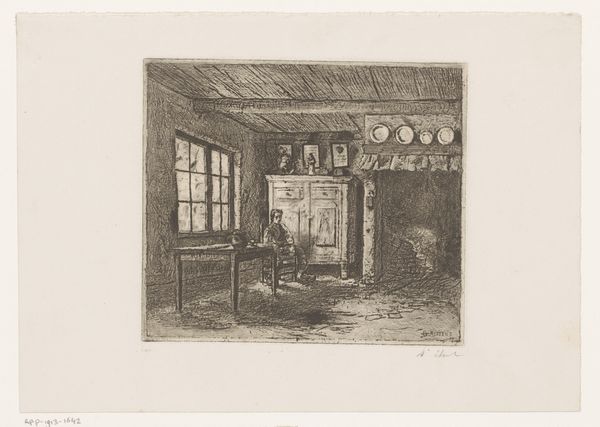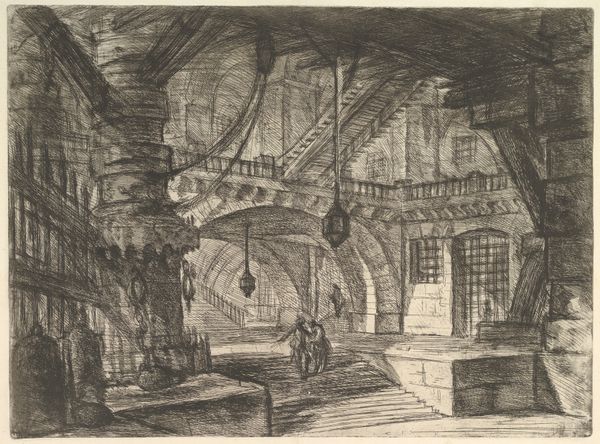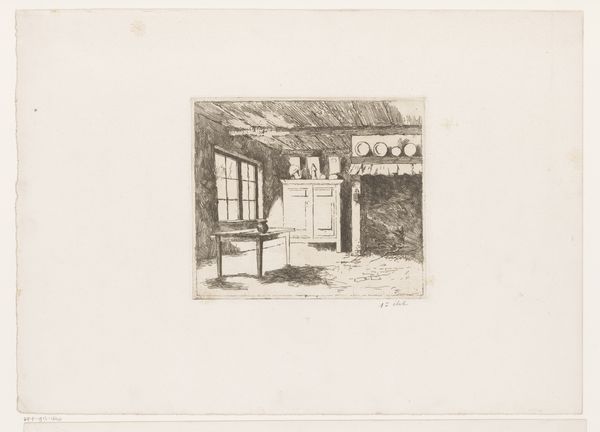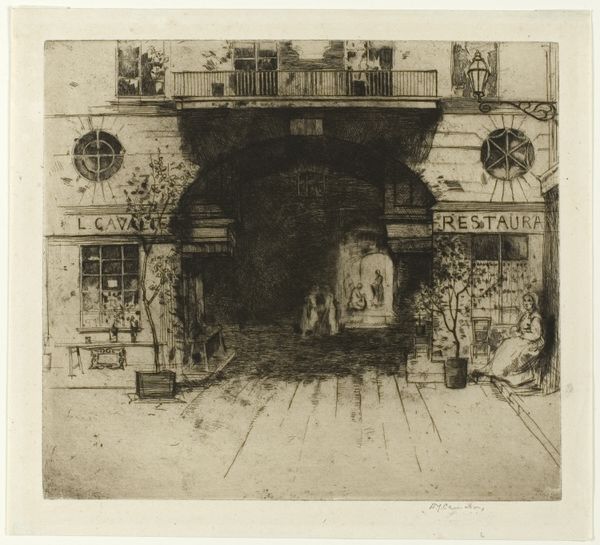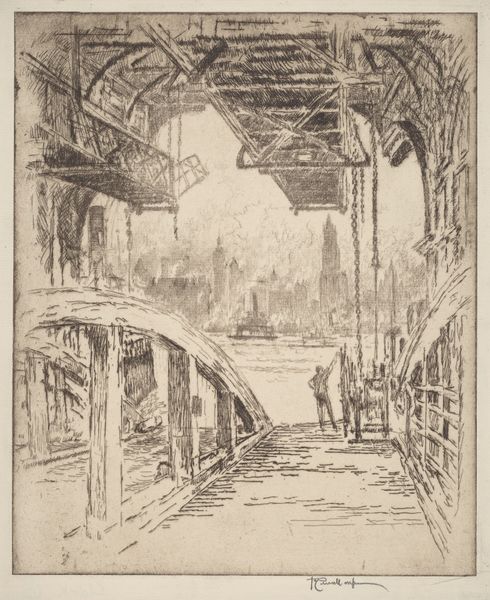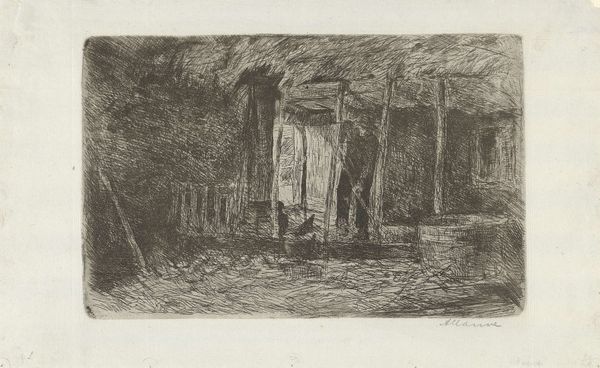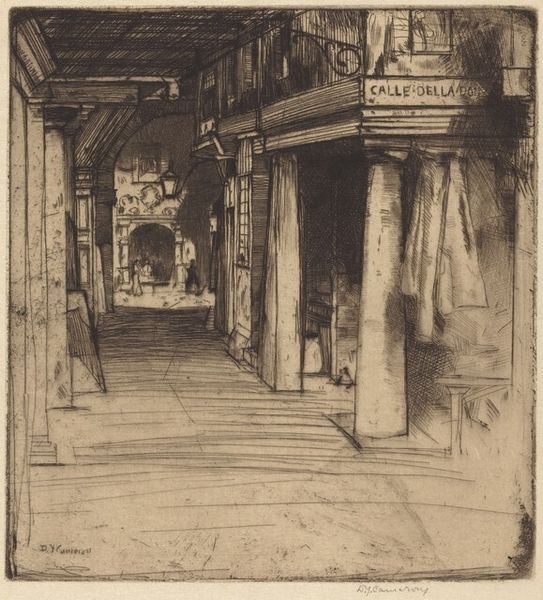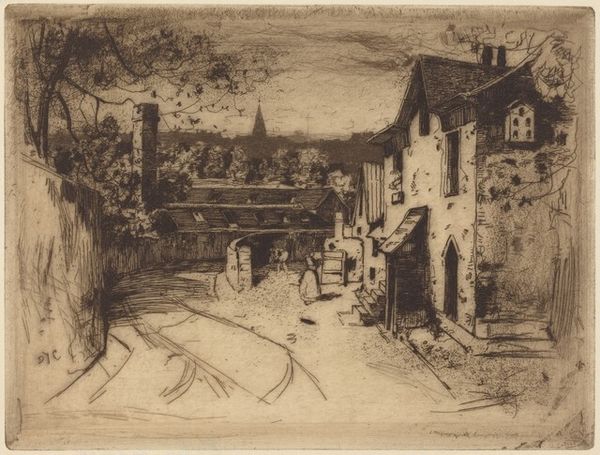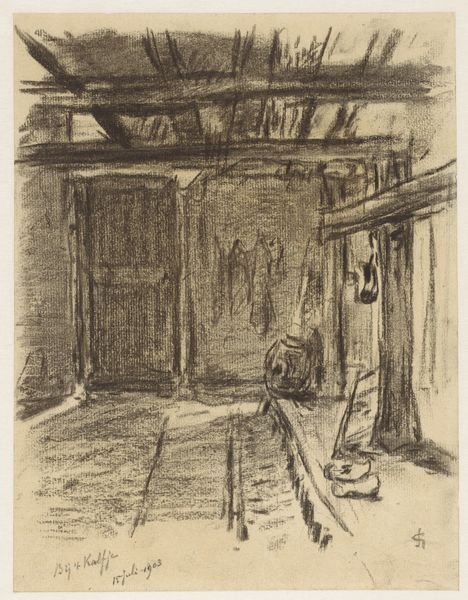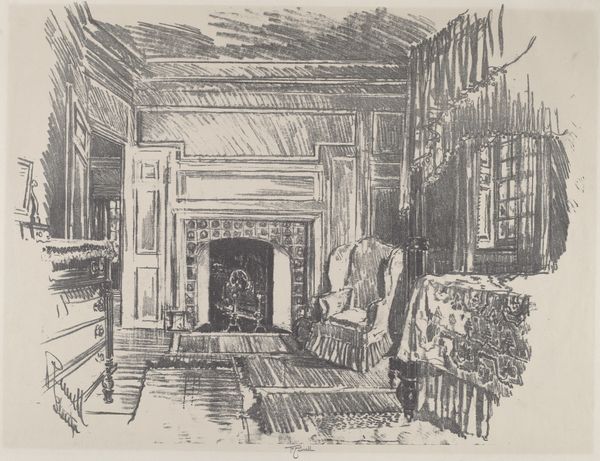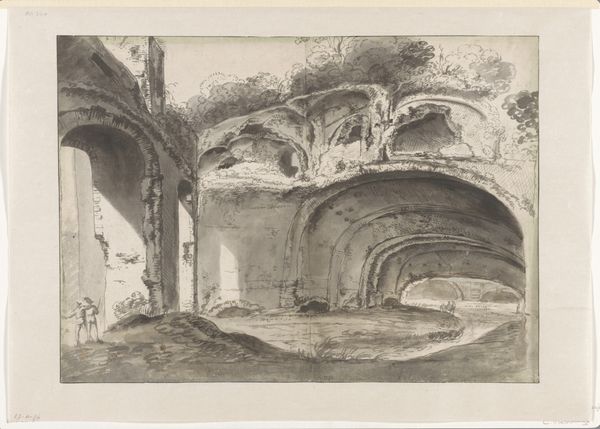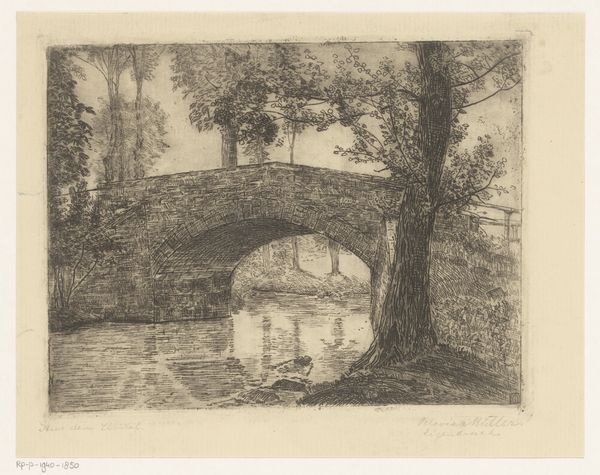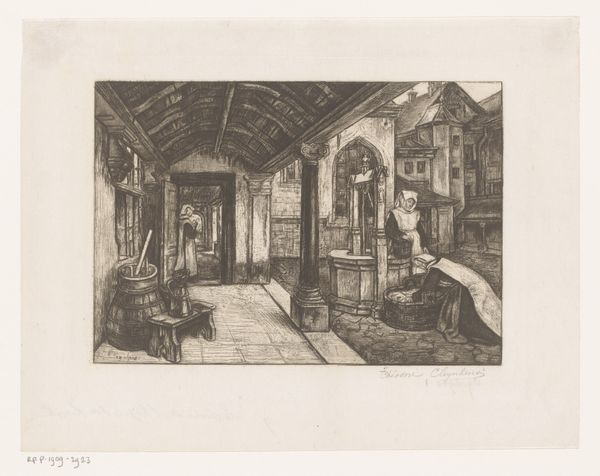
drawing, print, etching, paper
#
drawing
# print
#
etching
#
landscape
#
paper
#
realism
Dimensions: 171 × 211 mm (image/plate); 201 × 237 mm (sheet)
Copyright: Public Domain
Curator: This is David Young Cameron's "Montivilliers," an etching from 1903 now residing here at The Art Institute of Chicago. What’s your initial impression? Editor: It has such a somber mood; the shadowy arcade feels like a liminal space. There's an almost oppressive weight to the architectural forms. The dark corridor lined by weighty wooden supports and stone feels like a stage for a quiet, yet palpable human drama. Curator: Right. The method of production and distribution of prints broadens art viewership beyond the elite. Consider how printmaking as a whole democratized art, bringing scenes like this abbey corridor to a wider public. Editor: True. But let's also consider how effectively Cameron uses the linear quality of etching to create depth and texture. The strong diagonal lines guide our eye down the corridor, focusing our gaze on that faint light. The architecture almost swallows up the human element here, but they are important nonetheless. Curator: Those figures remind us that this isn’t merely a structural study. We need to look closely to understand labor and daily life, to realize this space is both sanctuary and workplace. It raises questions about who built it, who uses it. Editor: And from a purely aesthetic perspective, consider the brilliant contrast of light and dark that establishes the mood, no? Cameron masterfully directs us. Curator: He invites us to analyze, consider, reflect... but importantly, we also ask who "we" are. Who is allowed access to the space depicted, who buys the print, and what kind of meaning is created for all these viewers. Editor: Ultimately, Cameron’s manipulation of light, shade, and perspective creates a stunning visual poem. We see a clear convergence of lines that makes our viewing so smooth. Curator: Considering the print in its socio-historical frame is key. The beauty of the image becomes, at least partially, constructed from a larger picture, which includes the class of consumer. The print isn’t solely beautiful, it's an artful commodity. Editor: Yes. Now, reflecting on the image and its social contexts truly expands my perspective.
Comments
No comments
Be the first to comment and join the conversation on the ultimate creative platform.
